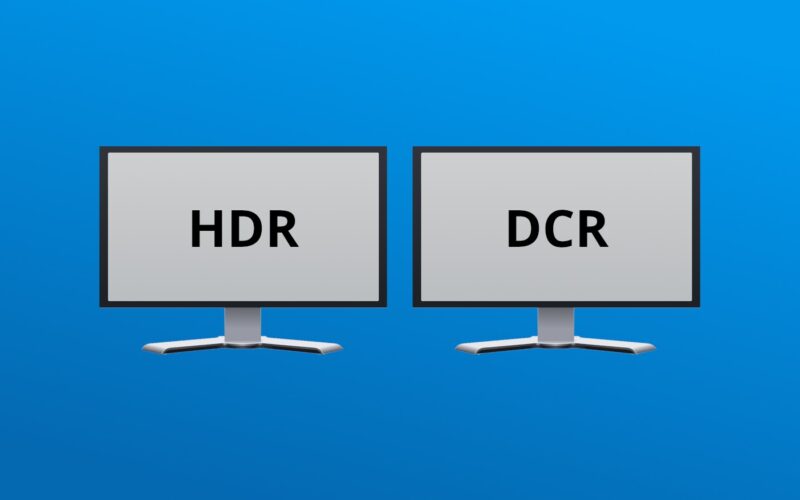What is HDR and DCR Monitor?
HDR and DCR Monitor: Discover the differences between High Dynamic Range and Dynamic Contrast Ratio.

When we choose a monitor, it is not enough to just choose the size, but we have to choose its technology. For the best viewing experience, two popular types of monitors stand out: HDR (High Dynamic Range) and DCR (Dynamic Contrast Ratio). Both are great in their respective fields, but understanding their differences is crucial to making a good choice.
HDR: High Dynamic Range
HDR, or High Dynamic Range, is a technology that increases the color range and contrast of an image, providing more vibrant and realistic visuals. Using a color depth of 10 bits or greater, HDR monitors can display a much wider range of colors and brightness levels. HDR technology works with greater color depth and a broader spectrum of luminosity. This means you can see more detail in very bright and very dark areas of the image. For example, details in deep shadows and bright lights are more visible, resulting in a more realistic and immersive image.
The benefits of an HDR monitor
An HDR monitor offers a wider, more natural color gamut, resulting in a more vibrant display. Furthermore, its superior detail allows you to visualize more nuances in scenes with large variations in brightness. This provides an immersive experience, especially ideal for movies, games and graphic content, where color accuracy and contrast are essential for an immersive experience.
DCR: Dynamic Contrast Ratio
DCR, or Dynamic Contrast Ratio, is a technology that dynamically adjusts screen brightness in real time to improve image contrast. The goal is to increase the difference between the brightest and darkest parts of the screen, adapting to the content displayed. Monitors with DCR detect the content being displayed and automatically adjust brightness levels. In bright scenes, DCR reduces brightness to avoid glare, while in dark scenes, it increases brightness to highlight details.
The benefits of a DCR monitor
The benefits of a DCR monitor are many. It offers automatic adjustment, improving viewing without having to manually adjust brightness settings. Additionally, DCR enhances details in high-contrast scenes, providing optimized viewing. Its versatility is highlighted by its ability to adapt to different types of content, offering a practical response to lighting variations.
The best choice
While HDR delivers deeper blacks and brighter whites, increasing dynamic contrast and color vibrancy, DCR adjusts contrast in real time but doesn’t achieve the same level of color depth and brightness as HDR. If you are looking for the best possible image quality, with vibrant colors and a high level of detail, an HDR monitor is the ideal choice. It offers an immersive experience that’s hard to beat. On the other hand, if you need a monitor that automatically adapts to different types of content and lighting conditions, a monitor with DCR may be more practical. It provides good image quality without the need for constant adjustments.
Both HDR and DCR offer improvements in image quality, but each serves different needs. While HDR excels at offering a rich and detailed visual experience, ideal for entertainment and graphics work, DCR is excellent for general use, providing dynamic and practical adjustment of contrast and brightness. Evaluate your needs and choose the monitor that best meets your usage profile.
